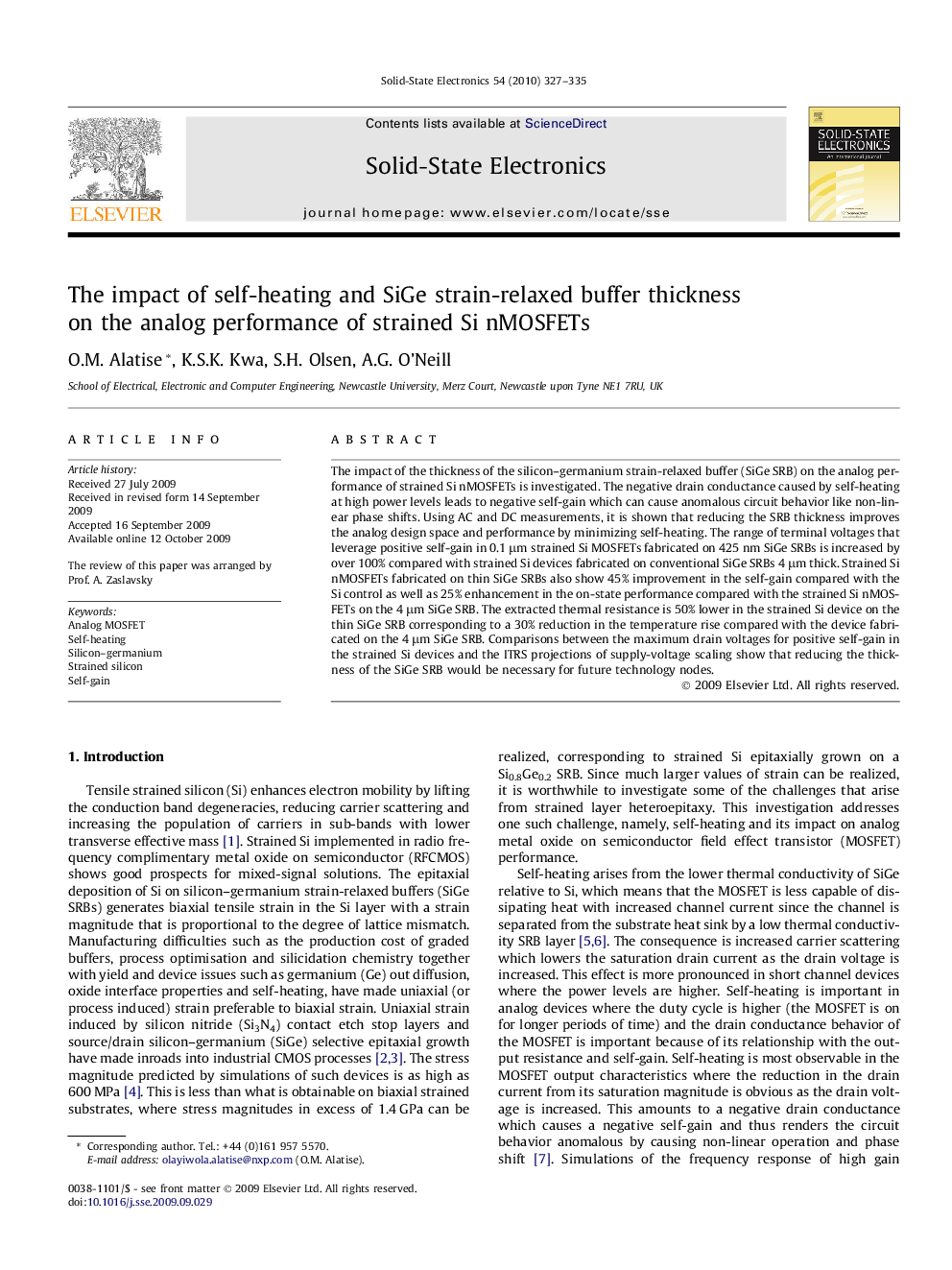| کد مقاله | کد نشریه | سال انتشار | مقاله انگلیسی | نسخه تمام متن |
|---|---|---|---|---|
| 748025 | 894726 | 2010 | 9 صفحه PDF | دانلود رایگان |

The impact of the thickness of the silicon–germanium strain-relaxed buffer (SiGe SRB) on the analog performance of strained Si nMOSFETs is investigated. The negative drain conductance caused by self-heating at high power levels leads to negative self-gain which can cause anomalous circuit behavior like non-linear phase shifts. Using AC and DC measurements, it is shown that reducing the SRB thickness improves the analog design space and performance by minimizing self-heating. The range of terminal voltages that leverage positive self-gain in 0.1 μm strained Si MOSFETs fabricated on 425 nm SiGe SRBs is increased by over 100% compared with strained Si devices fabricated on conventional SiGe SRBs 4 μm thick. Strained Si nMOSFETs fabricated on thin SiGe SRBs also show 45% improvement in the self-gain compared with the Si control as well as 25% enhancement in the on-state performance compared with the strained Si nMOSFETs on the 4 μm SiGe SRB. The extracted thermal resistance is 50% lower in the strained Si device on the thin SiGe SRB corresponding to a 30% reduction in the temperature rise compared with the device fabricated on the 4 μm SiGe SRB. Comparisons between the maximum drain voltages for positive self-gain in the strained Si devices and the ITRS projections of supply-voltage scaling show that reducing the thickness of the SiGe SRB would be necessary for future technology nodes.
Journal: Solid-State Electronics - Volume 54, Issue 3, March 2010, Pages 327–335